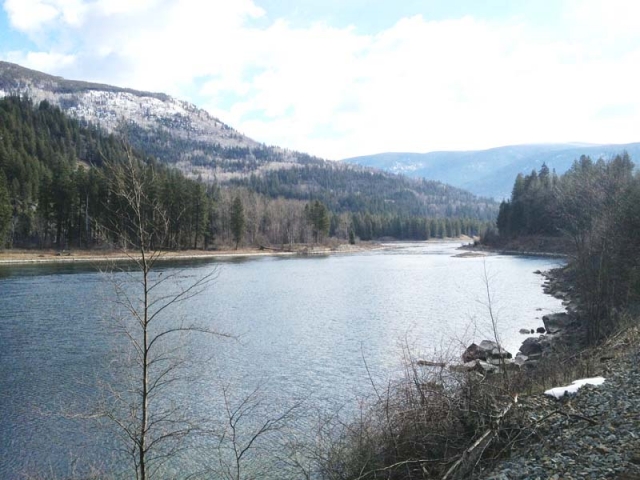High cost versus low flood reduction stalls Grohman Narrows project
BC Hydro has elected to scrap its Grohman Narrows dredging project in face of high costs and potential risks versus the degree of flood risk reduction it would bring, the corporation announced Monday.
The results of a two-year investigation by BC Hydro into the potential improvements at Grohman Narrows have concluded that dredging would provide minimal flood control relative to the costs and potential risks.
“Given this outcome, we will not be proceeding with any further work and it is very unlikely that the project will be revisited by BC Hydro in the foreseeable future,” said BC Hydro spokesperson Mary Anne Coules.
There were a number of factors considered in making this decision — some that were made during the October 29 Open House in Nelson — including the costs, risks and benefits, she said. For the project to move ahead, BC Hydro would have had to identify an economic solution that would provide adequate flood control.
“We would also need to address a number of risks related to the project including potential environmental impacts,” she said.
The economic benefits and costs for the Grohman Narrows project were very uncertain in the wake of the first phase investigations.
Preliminary cost estimates for the project ranged from $21 million to $68 million for the low to high volume excavation scenarios.
However, freshet peak levels, which usually occur in June, would be reduced by anywhere from only 22 to 60 centimetres (nine inches to two feet) for low to high excavation levels.
The low excavation scenario was expected to be economic; the medium scenario was expected to be marginally economic. The high scenario — which would have brought the biggest energy benefit and lower the lake approximately two feet — was not economically feasible and was excluded from further study, Coules noted.
There were a number of major factors affecting the project cost, including excavation methodology, timing and material management options.
Even so, it was expected it would have taken approximately 40 years for the energy benefits to offset the construction and overhead costs required for the project, Coules said.
Grohman Narrows is a natural constriction on the Kootenay River, located approximately three kilometres downstream of Nelson.
During periods of high inflow into Kootenay Lake, this constriction can contribute to unavoidably high lake levels and flooding.
That flooding became problematic in 2012 when the lake rose to a level not seen in 38 years. As a result of that high-water event and the consequent flood damage to properties around Kootenay Lake and downstream, regional leaders encouraged BC Hydro to fully investigate improvements to Grohman Narrows.
In early 2013, BC Hydro initiated an engineering study to investigate the feasibility, costs, and benefits of such channel improvements.
Improvements at Grohman Narrows would provide greater flood control, improve the operating flexibility for the Kootenay Lake system and provide power benefits to downstream generating stations in Canada (and potentially in the U.S.)
Despite earlier attempts to dredge the narrows, geotechnical studies released at a public meeting in Nelson last year revealed bedrock still lying thick across most of the Grohman Narrows area — and bed materials which consist of a mix of sand, gravel and cobbles — but would not influence dredging operations.
The only significant sediment comes from Grohman Creek.
Coules did not expect any sort of backlash from local government officials, the push behind the project at the outset.
“Local government representatives have been advised of our decision not to continue with the project, and we will be working with them to address any questions or concerns they may have,” she said.


























Comments